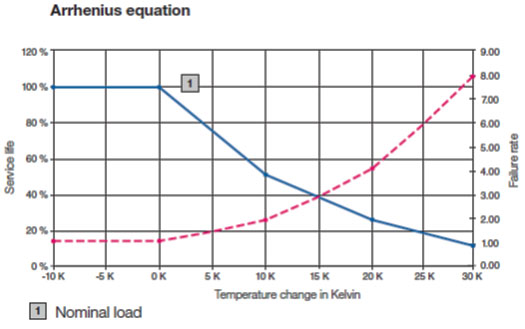
Is it just me . . . or is it really hot in here?
Imagine you find yourself locked in a small metal closet with little or no ventilation . . . it wouldn’t take long before you were perspiring profusely and gasping for breath. Well, now imagine that you’re a 19-inch rack stacked with computers and other electronics in that same closet. It wouldn’t take long before excessive heat forced you to shut down completely.
An electronics enclosure is designed to protect electronic components and devices by providing a physical barrier to aggressive media like humidity, water, oil-contaminated air, corrosive vapors, and airborne dust. As threatening as these factors are, the number one enemy of today’s high-performance electronic and microelectronic components housed in enclosures is actually excessive heat. As the packing density inside enclosures has increased, so have the importance of heat dissipation and energy efficiency in modern climate control enclosure systems. If exposed to a 10K increase in temperature relative to the maximum permitted operating temperature, an electronic component’s service life can be cut in half and its failure rate doubles. (See the Arrhenius equation to left)
Thermal conduction and convection are the most significant forms of heat dissipation commonly used to cool enclosures and electronic housings. Whether we are dealing with heat conduction or convection depends on whether the enclosure is open (air permeable) or closed (air-tight). With an open (i.e., air permeable) enclosure, the heat can be dissipated from the enclosure via air circulation from inside to outside (thermal conduction). If the enclosure must remain closed (air-tight), the heat can only be dissipated through the enclosure walls (through convection).
Whether natural convection is sufficient to dissipate the heat loss () from the closed enclosure through the walls to the outside depends on the ambient temperature (Tu) and the maximum permitted internal temperature (Ti) inside the enclosure. The maximum temperature increase relative to the environment inside the cabinet can be determined from this equation:
![]()
where k is the heat transfer coefficient (for sheet steel k = 5.5 W/m2 K) and A (m2) is the enclosure surface area, determined according to DIN 57 660 part 500.
Here’s an example of how to calculate heat loss in the enclosure: = 400 watts
Enclosure surface area (W x H x D 600 x 2000 x 600 mm)
A = 5.16 m²; Tu = 22°C
(Ti-Tu) = 400/(5.5 . 5.16) > 22-14 = 8 K
Result: The enclosure internal temperature (Ti) with heat loss of 400 W and surface area of 5.16 m² at an ambient temperature of +22°C will rise to approx. +30°C.

